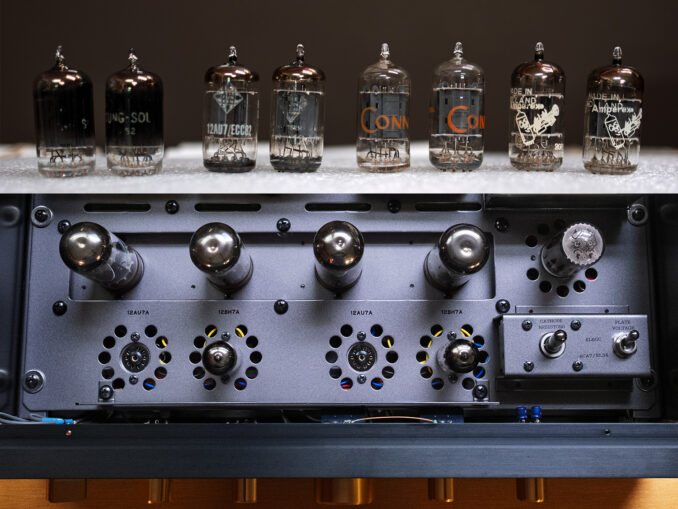
Imagine you’re trying different frostings on your home made carrot cake.
Four different cream cheese frosting recipes to see which you like best and after tasting and re-tasting you find a favorite. If you approached this process the way some people approach tube rolling, you might be tempted to declare your favorite The Best! even though your spouse preferred a different one and both would be truly awful on crème brûlée.
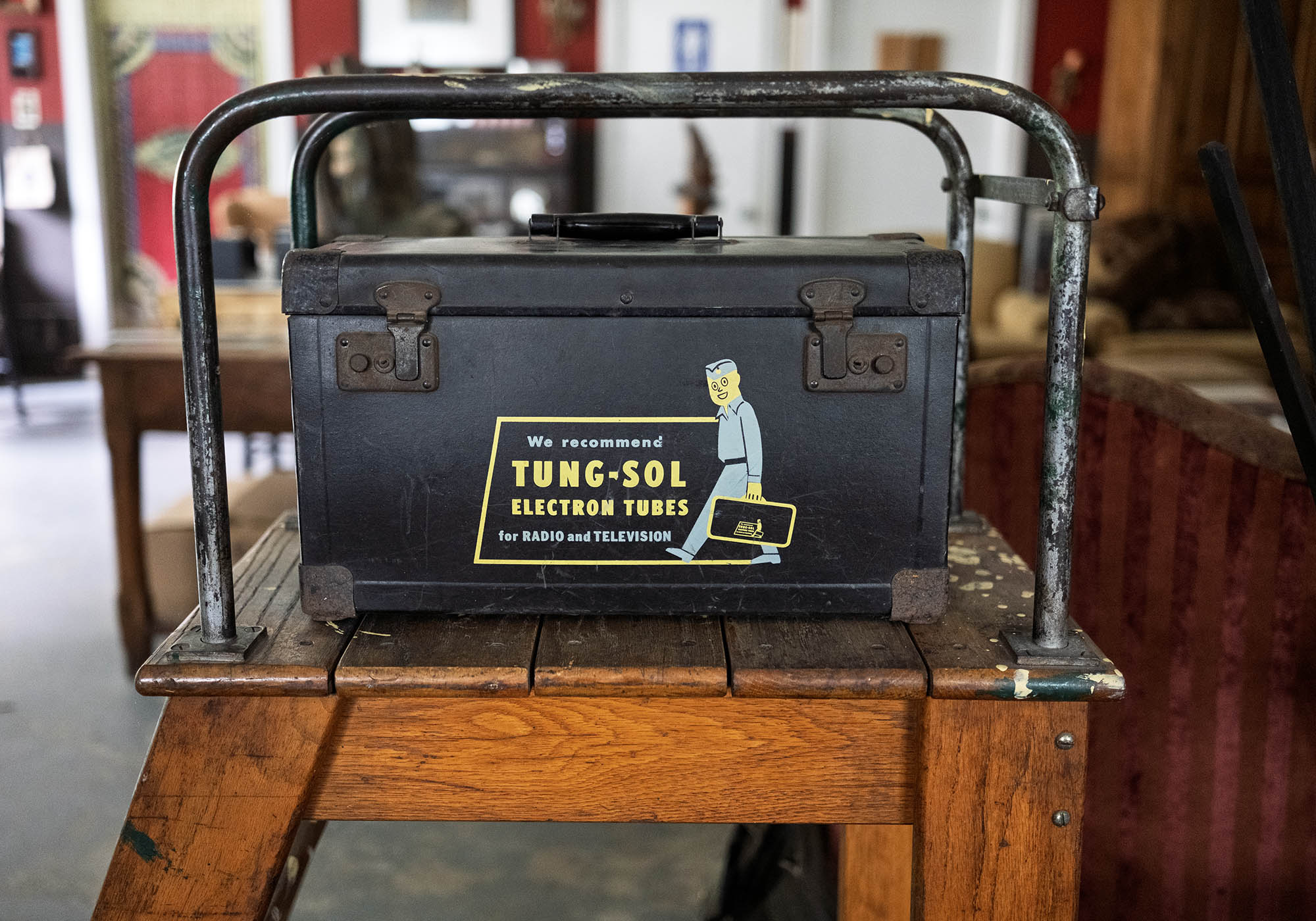
I admit to having a love/discomfort relationship with tube rolling. To start with the negative, I find A/B listening tedious especially when using the same few tracks over and over but this happens to be, regrettably, the best way to suss out difference. On the positive side, trying different tubes can bring great rewards when it comes to connecting to music more fully—more emotionally, more intellectually, or a bit of both depending on your tilt. The discomfort is worth it, thus the need for a caddy.

Some personal history. My tube amp and preamp (and digital) experience dates back to the early 2000s and I’ve owned a bunch including the Golden Tube Audio SI-50, Sun Audio SV-300BE, Melos SHA Gold preamp, AH! Tjoeb CD player, Deja Vu Audio Preamp, Cal Audio Alpha DAC, Fi 45 prototype Stereo Amp, Fi X, Fi 421, Shindo Cortese F2a/Monbrison, SAC Thailand Minute single-ended EL-84 integrated amp (which I still have), and a McIntosh MAC 1500 hybrid receiver to name some. Back in the day, I was an active Vacuum Tube Valley, Listener, and Sound Practices reader and dreamt of Dinosaurs and Komuro amps. When I first began writing about hifi in 2005 for 6moons, my focus was on low power amps and high efficiency speakers.

The Leben CS600 was first released in 2005, that’s 20 years ago in people-time but some amplifiers age much slower than Homo sapiens. The CS600X arrived in 2019 and the difference between them lies in the driver stage where the CS600 used four 6CS7s while the CS600X switched to a 12AU7/12HB7 combo, one combo per channel. Reason being, the out of production 6CS7s became increasingly hard to find while 12AU7s and 12HB7 are aplenty, both new production and NOS (New Old Stock). It’s worth noting that ‘NOS’ by definition means a tube that’s never been used with some also being New In Box (NIB). NOS NIB. That said, it’s common to call a tube that measures as new even though it may have seen some use—NOS. Makes sense to me. I recommend buying old tubes from reputable sellers even though you may find a great deal! on eBay.
From the highly recommended audiotubes.com:
NOS tubes fall within the Gm characteristic range of an average tube, as published in the RCA RECEIVING TUBE MANUAL. This publication also states “Individual tubes, like any manufactured product, may have characteristics that range above or below the values given.”
It is important to note here that a common misconception of tube testing is that every unused tube, new or vintage, should test at 100% of the meter scale of the tester, or at exactly the number listed as the nominal Gm on a digital tester, such as the Amplitrex. In reality, very few tubes test exactly at these readings, some will be above these numbers, most will likely be below. As the RCA manual states that the characteristics may fall in a range above or below the bogey values. For this reason, the original RMA specifications were plus or minus 20% for Gm for an unused tube, and minimum good would be up to 50% lower than the nominal number.
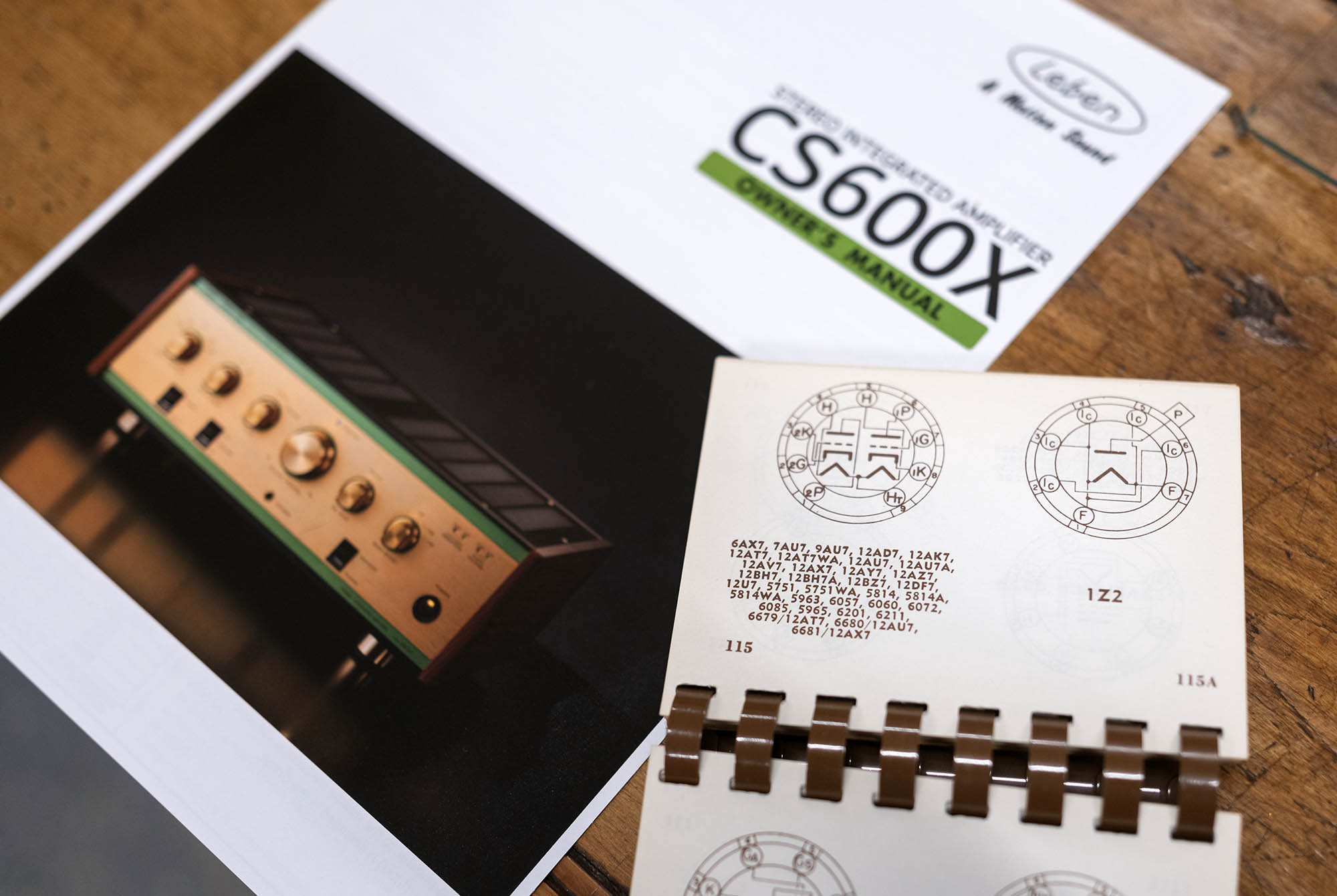
I’ve owned a Leben CS600 twice—the first was an original CS600 and my current CS600X. In total, I’ve lived with and have been listening through a Leben CS600 or CS600X for about 8 years and the CS600X is as ‘modern’ an amp in terms of performance as any near its price. When I say performance, I’m talking about listening to music through it.

Other than swapping out the stock new production Tung-Sol EL34s with Gold Lion KT77s, I’ve done no other rolling. Until now. The stock tubes in the CS600X’s driver stage are new production Electro-Harmonix 12AU7s and 12HB7s which are readily available in matched pairs for about $48 and $70 respectively.
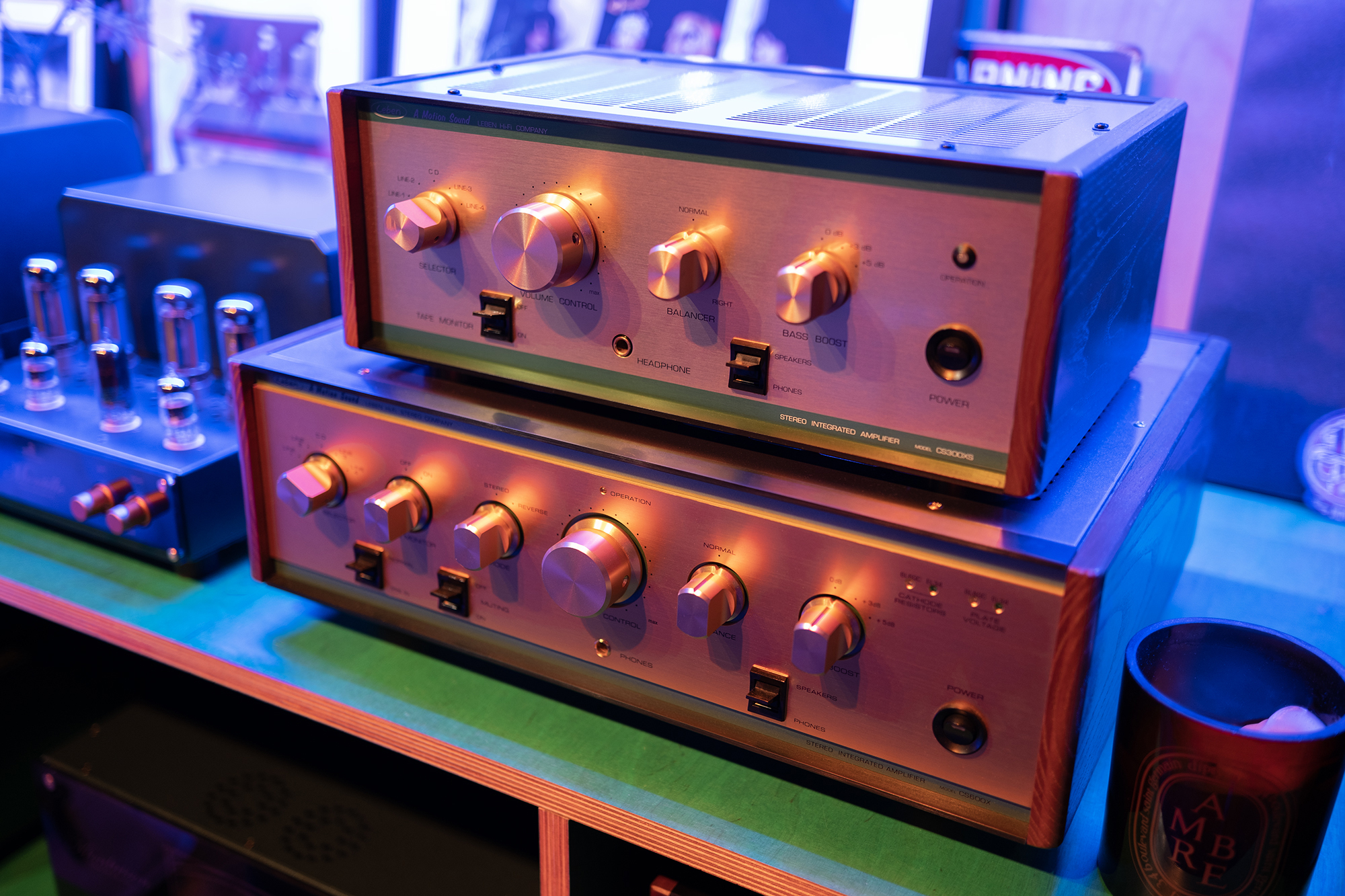
This entire adventure came about after my pal Adam Wexler, proprietor of Red Hook, Brooklyn’s Resolution A/V who are a Leben dealer among many other fine brands, was telling me about some very positive results rolling the driver tubes in the CS600X. Hmm, you don’t say….I’ve written about two events at Adam’s place, most recently the double premier of the DeVore Fidelity O/Bronze, which are in Barn for review, and Nagra’s Reference line. Adam also buys and sells tons of used and vintage hifi, tons, and has done for decades.
Here’s Adam on their tube stash:
I have a tube collection that I’ve been curating for over 25 years. We test and match all of our tubes on an Amplitrex tube tester. Andy is our in-house tube encyclopedia. We sell our tubes directly to customers who purchase tube components from us….such as Leben. In the future, we may sell tubes directly to non-customers via our website, but at the moment that’s not the case. In-house, we love rolling to tubes and listening to differences. That’s some of the most fun we have here.
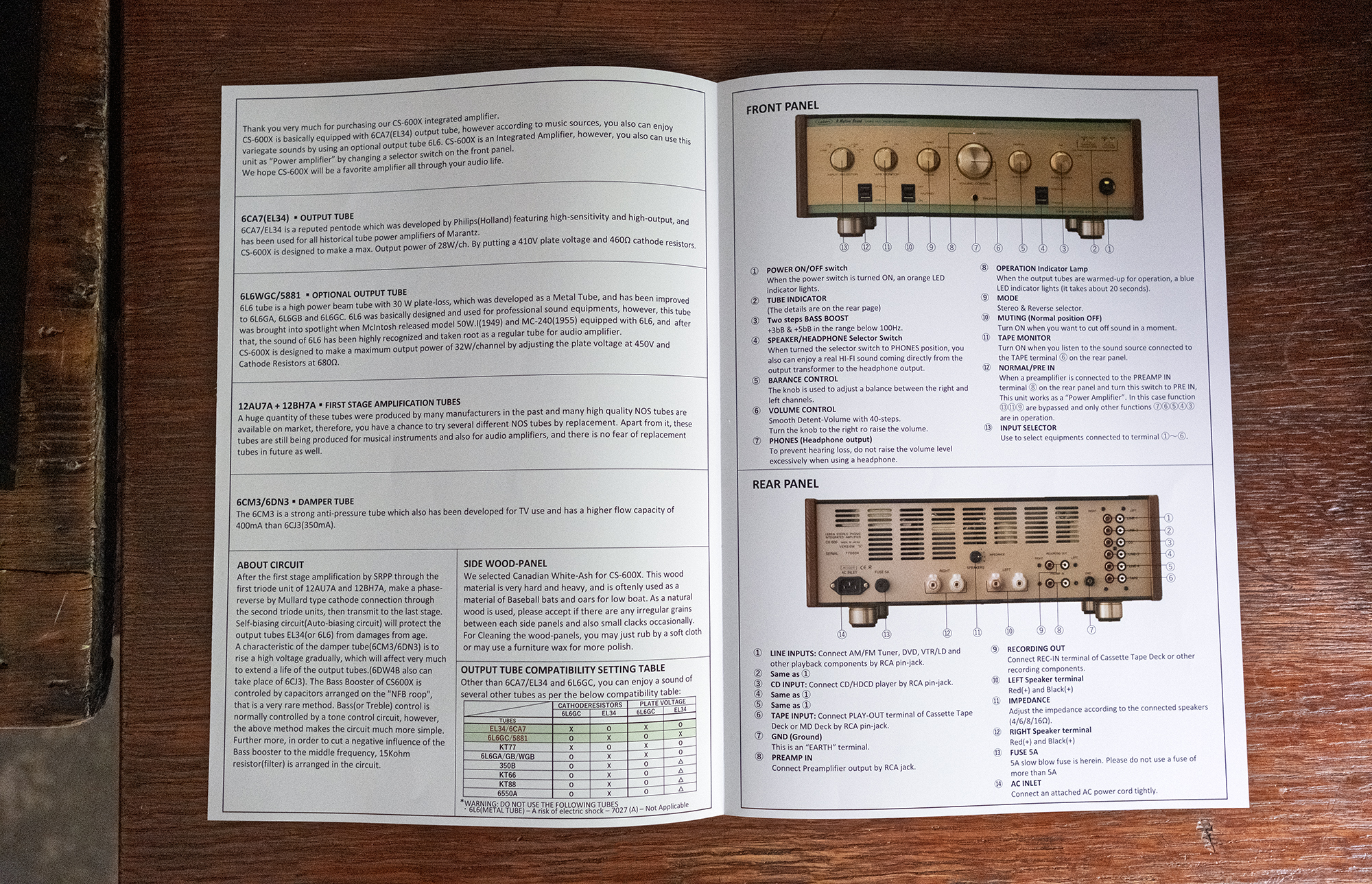
I’m going to leave the history and details of the 12AU7 to more knowledgeable people and will point once again to Brent Jessee Recording’s excellent audiotubes website for some in-depth discussion of the 12AU7 and its variants along with a very long and detailed list of goodies for sale (warning: this may be hazardous to your wallet).
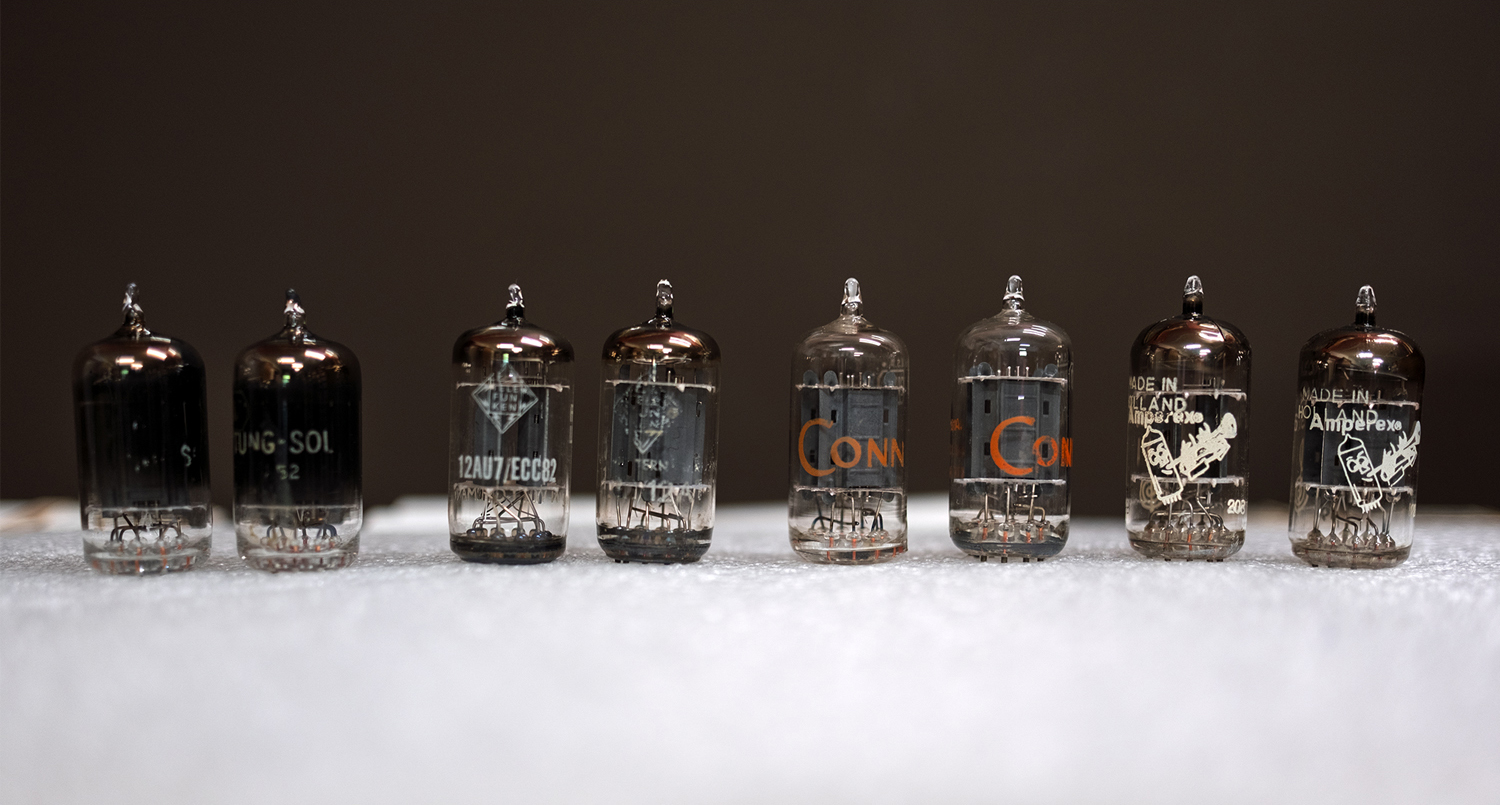
The NOS 12AU7s in play (from left) all sourced from and tested by Resolution A/V:
1940’s Tung-Sol black glass 12AU7
1960’s Telefunken ECC82 smooth plates
1960’s RCA clear top 12AU7 marked “Conn”
1959 Amperex 7316 with D getters and Bugle Boy labels
The systems:
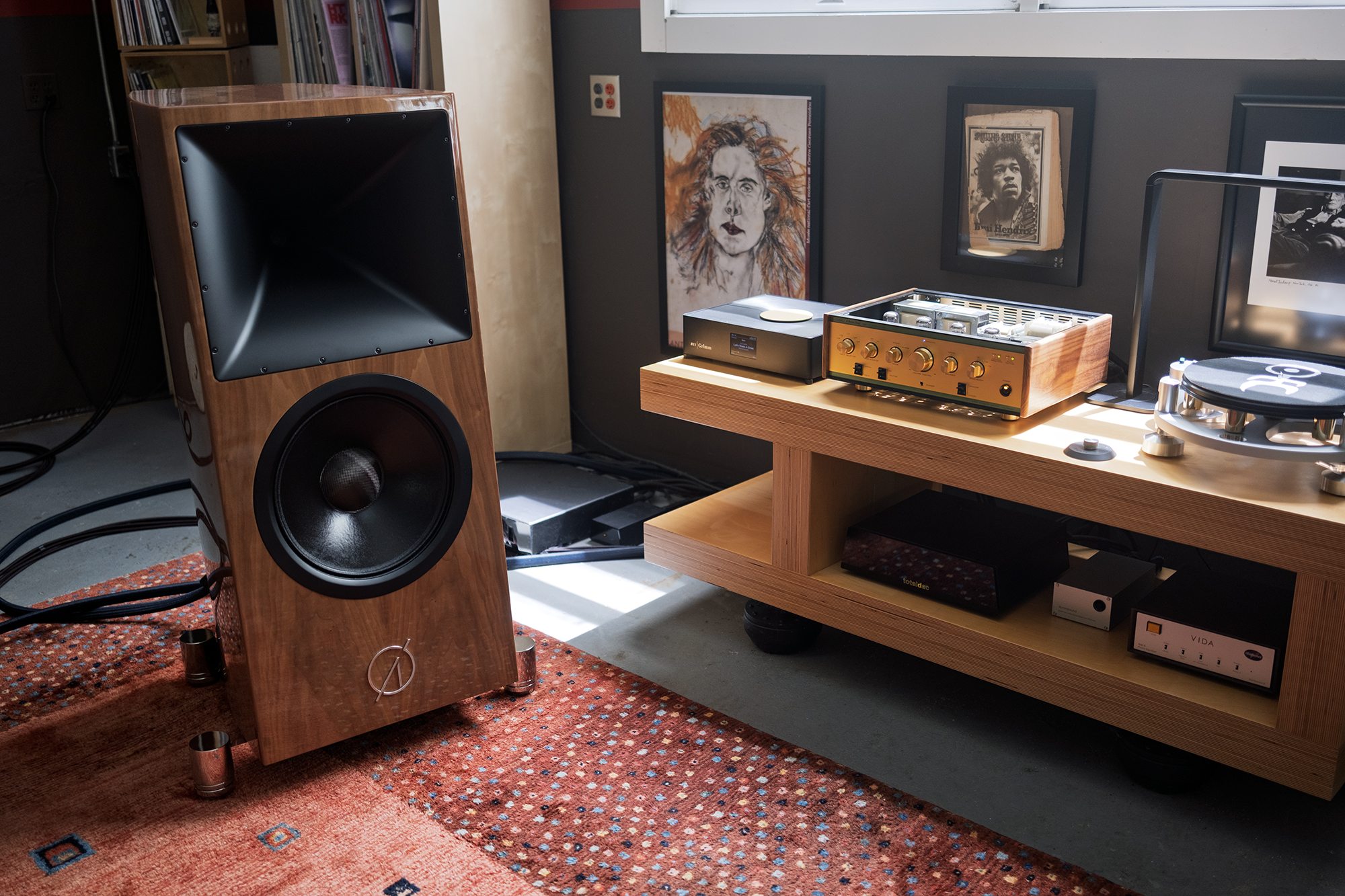
The A-Side
Ø Audio Verdande (more info)
Grimm MU1 (review)
totaldac d1-unity (review)
AudioQuest Diamond AES cable, FireBird interconnects, ThunderBird Zero speakers cables, Blizzard and Thunder High-Current AC cables, Niagara 3000 power conditioner
Network Acoustics Muon Pro Ethernet Filter (review)
Box Furniture ‘Fallen A’ rack
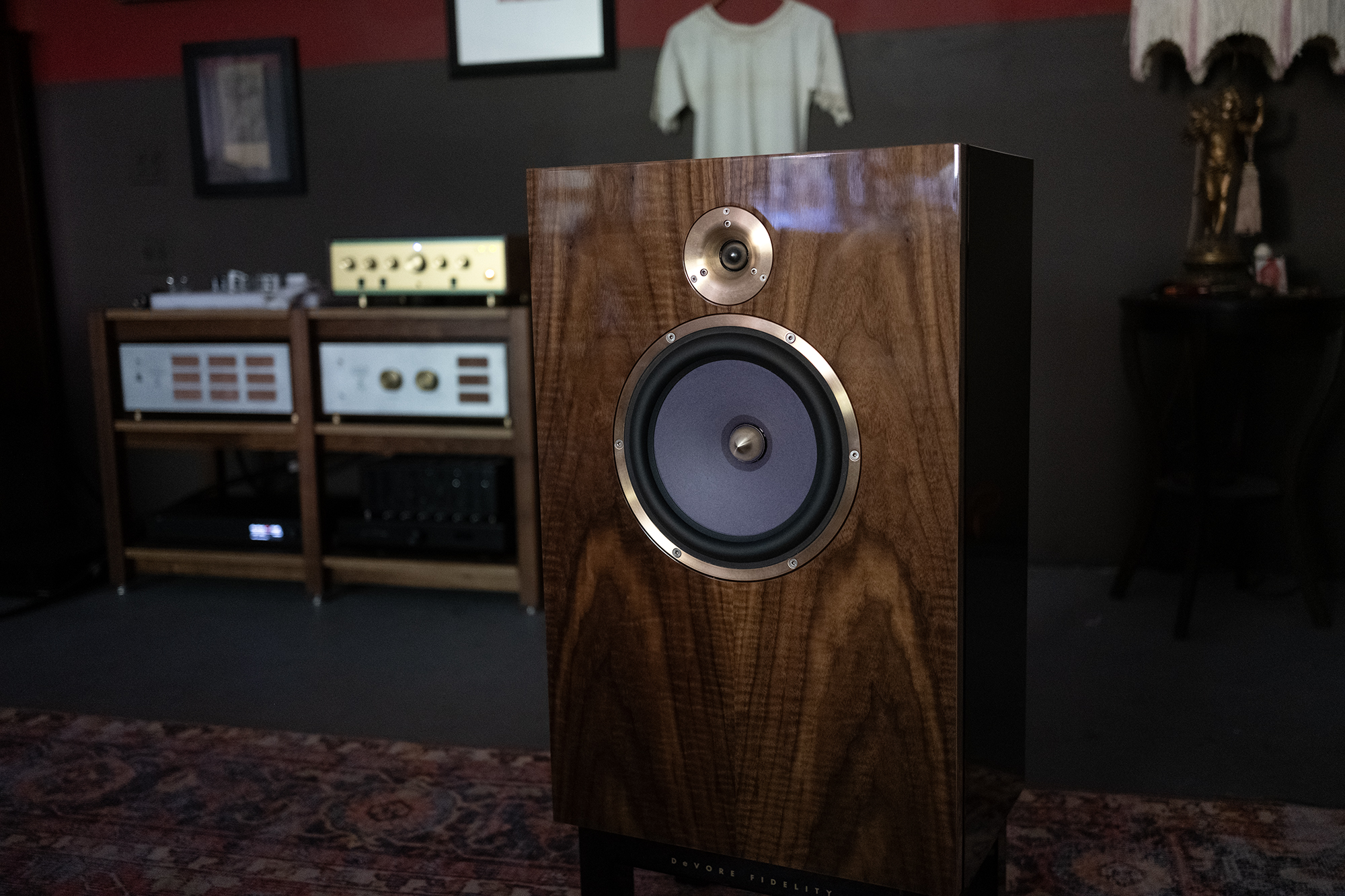
The B-Side
DeVore Fidelity O/Bronze (more info)
Weiss Helios streaming DAC (more info)
AudioQuest ThunderBird interconnects, Brave Heart speaker cables, NRG-Z3 power cables, PowerQuest PQ707
Box Furniture MD3S Modular rack
My listening methodology, to use a fancy word for listening to music, began with these tracks:
“Bells” from Crooked Wing by These New Puritans (2025, Domino Recording Co.)
“Cellophone” from Magdalene by FKA twigs (2019, Young Turks)
“Skeleton Key” from Halo On The Inside by Circuit des Yeux (2025, Matador)
“Nature’s Child” from Planting by the Signs by S.G. Goodman w/Bonnie “Prince” Billy (2025, Slough Water Records)
“Go Your Way” from Voice From the Empty Moor (Songs of Anne Briggs) by Devin Hoff featuring Sharon Van Etten (2021, Kill Rock Stars)
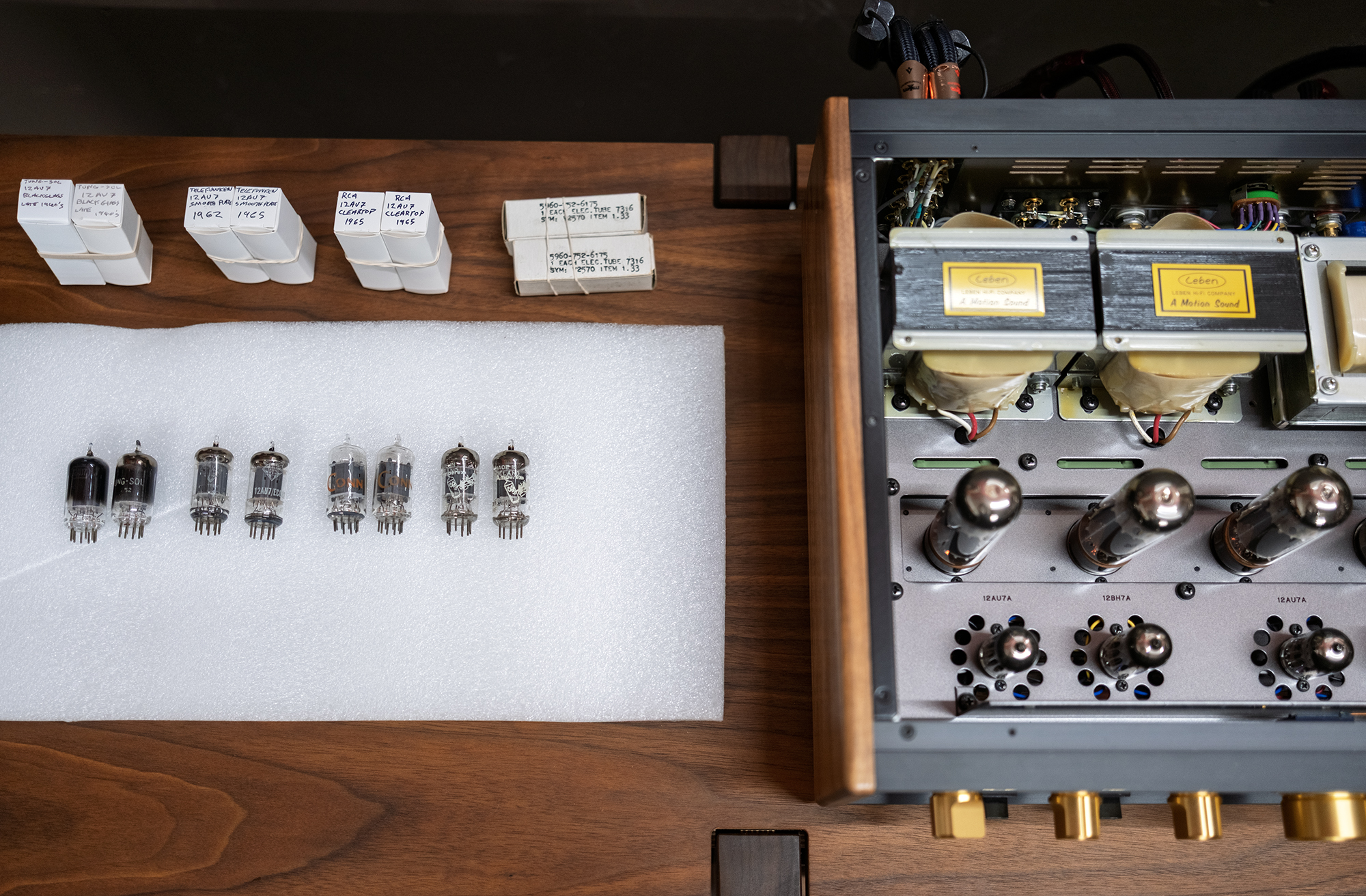
I set about swapping tubes after listening to each track all the way through, sometimes more than once, on the B-Side system taking time in between to let things cool down. This initial listening took place over several days and I ended up adding more music as the days went on. I then moved to the A-Side system and started over, this time taking less time between swaps since my conclusions from the B-Side mapped to what I was hearing on the A-Side. I then spent a few days listening to lots more music, mostly using my favorite tube pairs sometimes with my eyes closed to be sure I was hearing what I wasn’t seeing (wink). I also went back to the stock Electro-Harmonix tubes in each system as a baseline reference and to remind myself how silly I’ve been to wait this long to roll.
My thoughts…
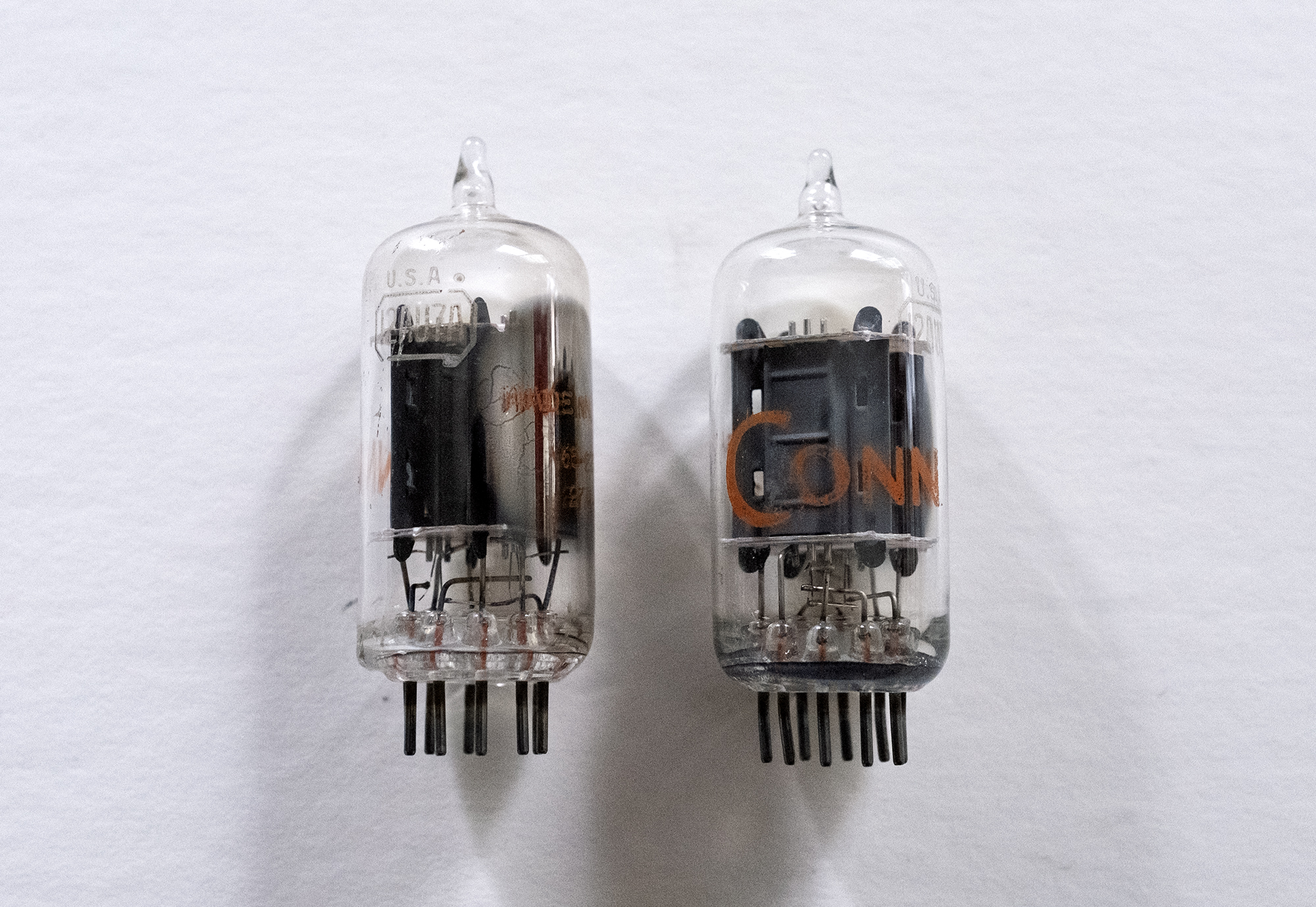
1960’s RCA clear top 12AU7 marked “Conn” (for C. G. Conn Ltd, an instrument maker who branded RCA tubes for their electric organs)
Bold! Badass, even. The RCAs were the most bass heavy and fat sounding tubes of the bunch. While this served some music well, especially poorly recorded music with lots of drive, I kinda tired of this sound after some time as it did not bring out the finer details of music which is where the deeper connection lives, imo. Party tubes? The RCAs are available from some online sellers for about $60-$80/matched pair which is a great price, all things considered, and even though they weren’t my favorites they are much more fun and colorful than the stock Electro-Harmonix tubes.

NOS Amperex 7316 (12AU7 variant) from 1959 with D getters and Bugle Boy labels
The Amperex 7316s, with the tube boy blowing a bugle on the glass (I love that), are the most detailed and least lush of the bunch. Bass response is nice and tight and controlled while offering real weight and slam. With the Leben’s already punchy sound thanks in part to the Gold Lion KT77s, the Bugle Boys were a bit too much of a good thing with the overall presentation sounding a bit too clean and bright for my taste.
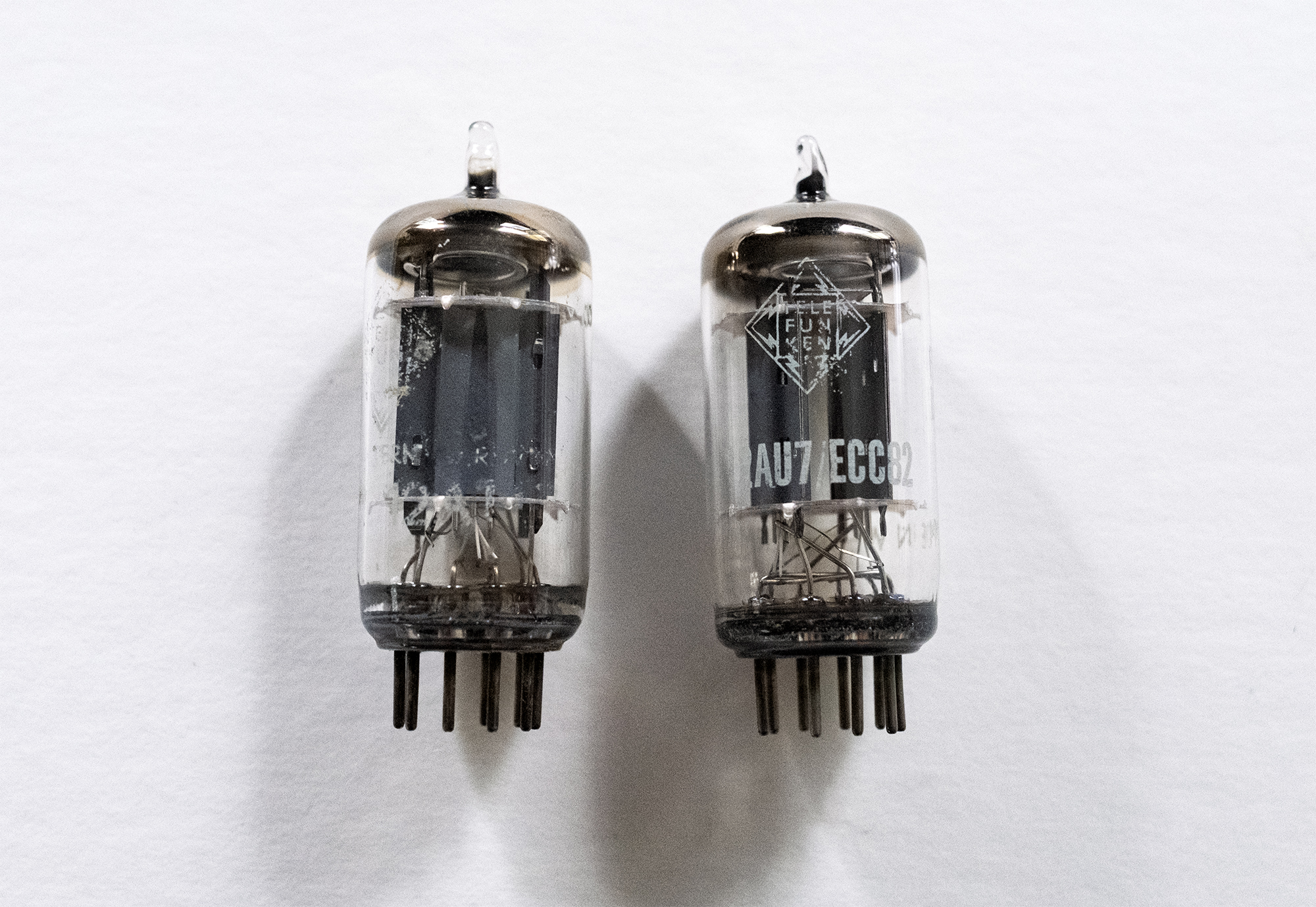
1960’s Telefunken ECC82 smooth plates
Heavenly is the word that came to mind when I first heard the Telefunken’s influence on the sound of music. There’s an airiness, detail, and dimensionality that’s smile-inducing in its billowy tactile goodness. That being said, the overall presentation focused my attention a bit too much on detail as opposed to the entire musical picture and I also heard a touch of thinness, a stridency especially in the upper frequencies creep in over extended listening.
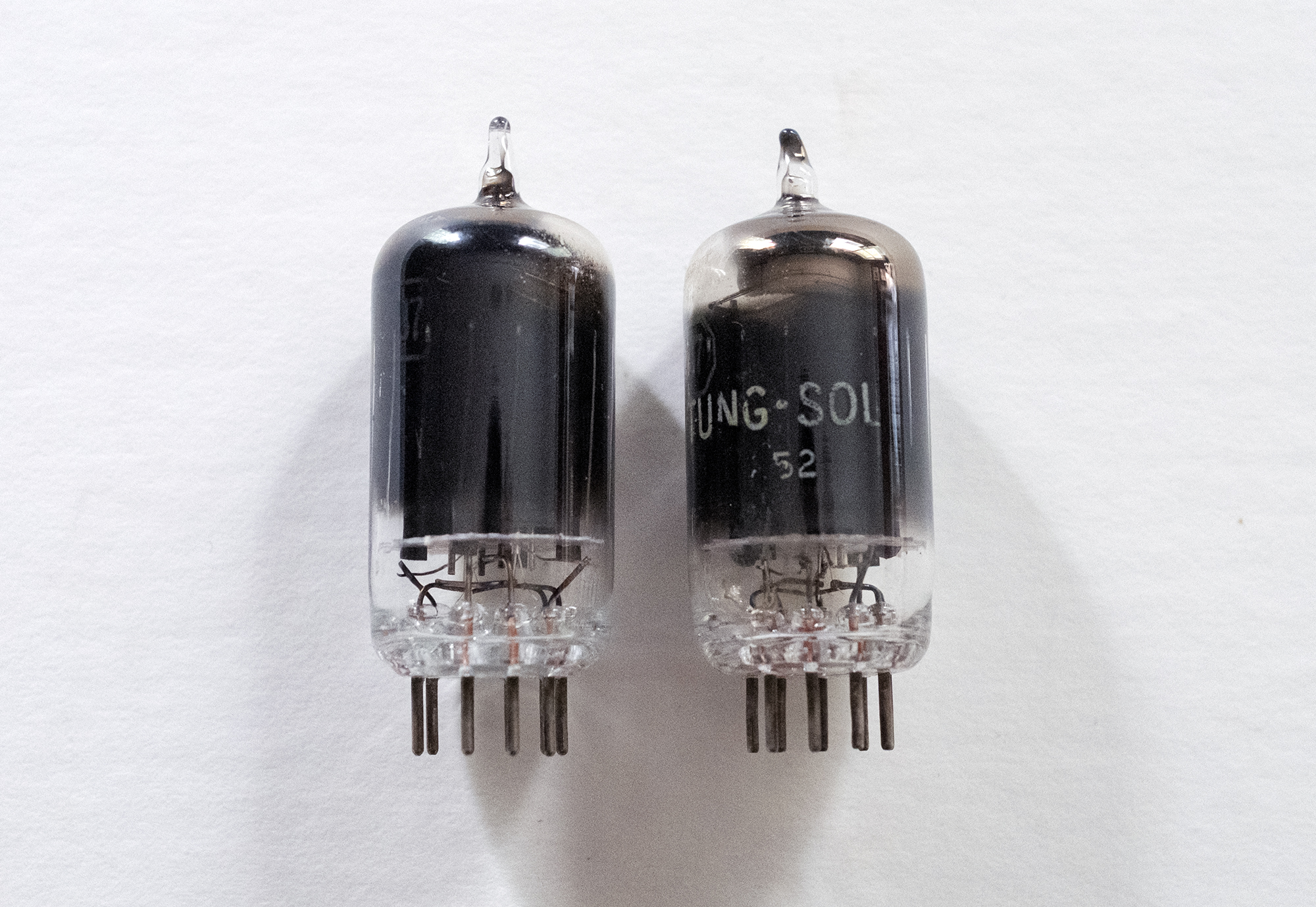
1940’s Tung-Sol black glass 12AU7
We have a winner. After just a few minutes into These New Puritans “Bells” with the Tung-Sols in play I was smiling from ear to ear and kicking myself for not doing this rolling sooner. The Tung-Sol in both system settings provided the richness I crave along with superb resolution, bass control, slamming dynamics, and a nice big airy sound. The Tung-Sol leave nothing out and they do the everything thing better than the others.
The difference between the Tung-Sol and the stock Electro-Harmonix 12AU7s is significant when it comes to the Leben’s performance, which was plainly evident in both systems where they added that much more excitement and that much more relevant musical information which translates into a deeper musical connection. Shivers & smiles all around.
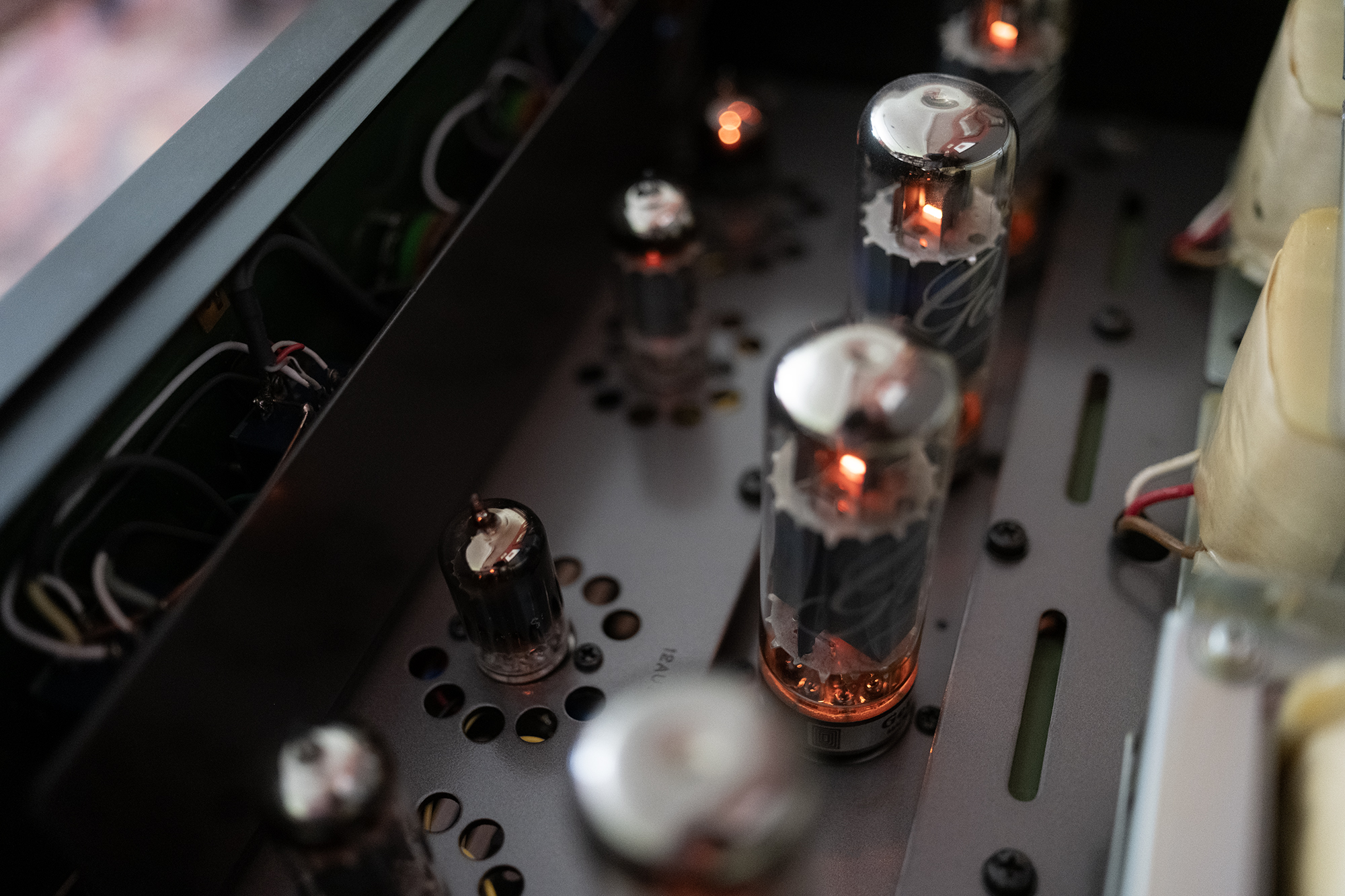
Caveats
My findings are based on use in the Leben CS600X in the systems described and the results are a product of this context and perhaps more importantly my tastes and preferences. So I am not saying, or decreeing, that the Tung-Sol are The Best 12AU7 for any and every application for every and any person on the planet. Omniscience, especially in hifi, is very overrated. And if you look at prices and comments related to the tubes I tried, you’ll see the Tung-Sol are not the most expensive or revered, for what that’s worth.
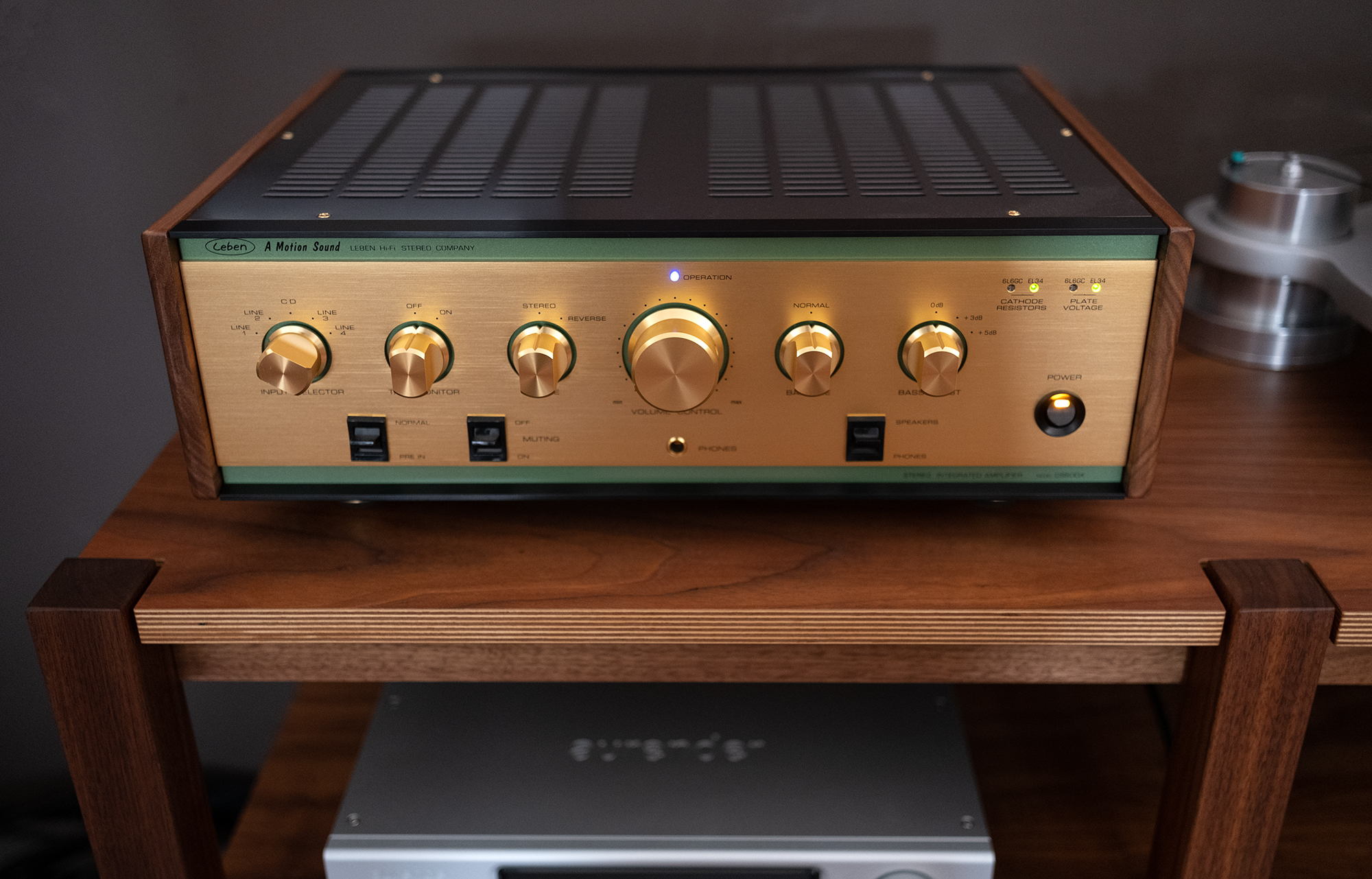
Epilogue
I’ve owned a cotton duck chore coat for more than a decade, made by The L. C. King Manufacturing Company founded in Bristol, Tennessee in 1913. Their first line of clothing was called “Pointer Brand”, which is the name on my jacket. It has since been discontinued. The relevant part to our tube rolling story is I bought two—the Pointer Brand chore coat fit me perfectly, was priced nice, and is very well made from a company with a long history. If you’ve ever seen me at a hifi show, odds are you’ve seen me in it. The second coat is still waiting for the first one to wear out.
All to say I’ll soon be the very happy owner of two pair of Tung-Sol black glass 12AU7s.
Addendum (an important one)
Since I had her open….
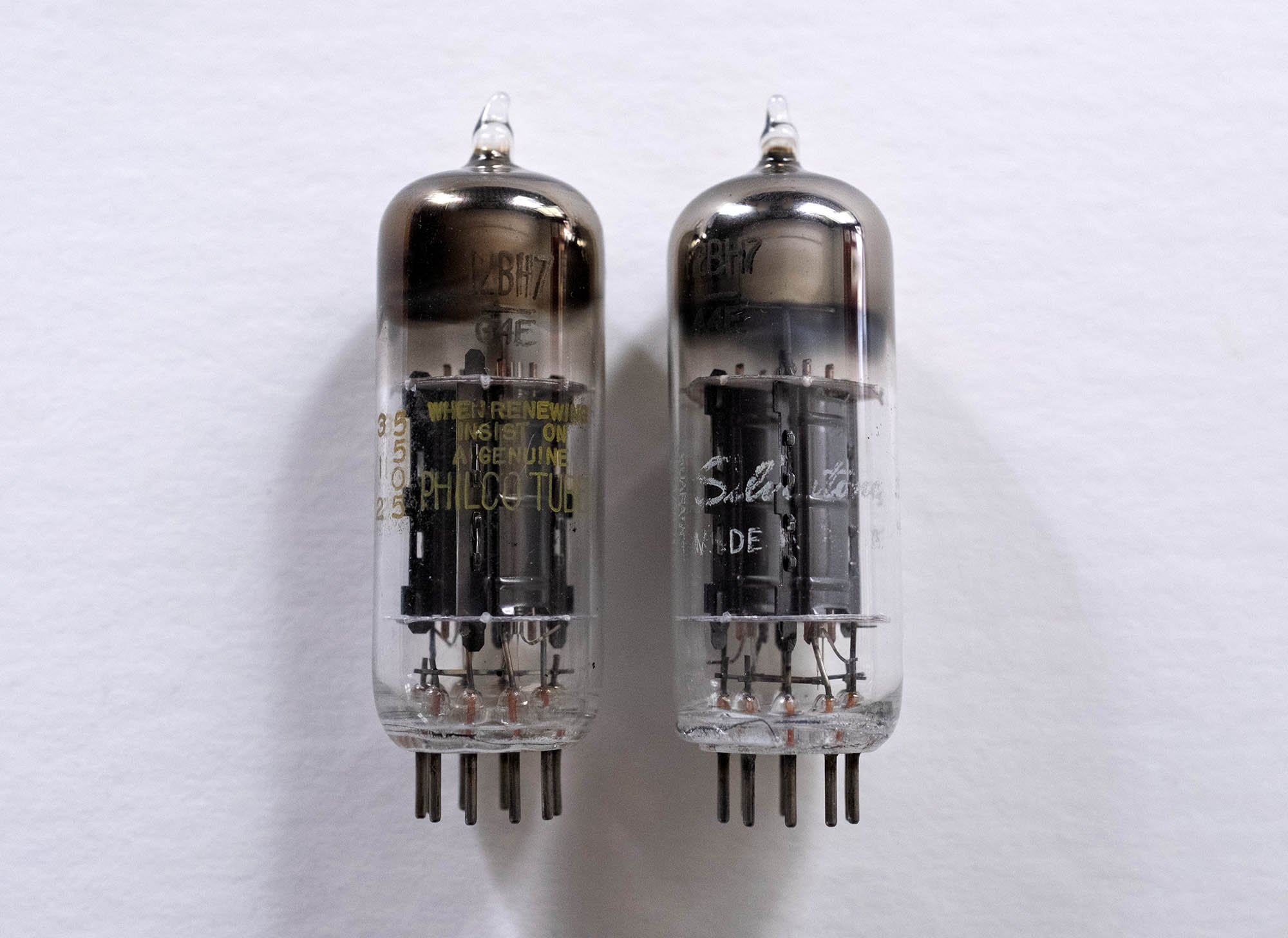
(!!!!) (Recommended pair 1954) 12BH7 Sylvania black oval plates “square=D” getter halo NOS and used/good 1954 (9/12.5ma and 9.8/11ma)
I just had to know so I bought this pair of 12BH7s from Tube World Express (that’s their description). They arrived a few days after I placed my order and the Sylvania’s were in the Leben moments after arrival. I let them settle in for some time allowing things to warm up and for everyone in the circuit to become acquainted. So to speak. Without belaboring the point, this is another serious improvement over the stock tubes most noticeably offering increased resolution and separation along with better bass control to a giddying degree. Giddy I tell ya’, as I listened to some of those same tracks and other well worn favorites. Being from NJ I cursed out loud a few times in wonder and delight.
P.S. (for Leben Owners)
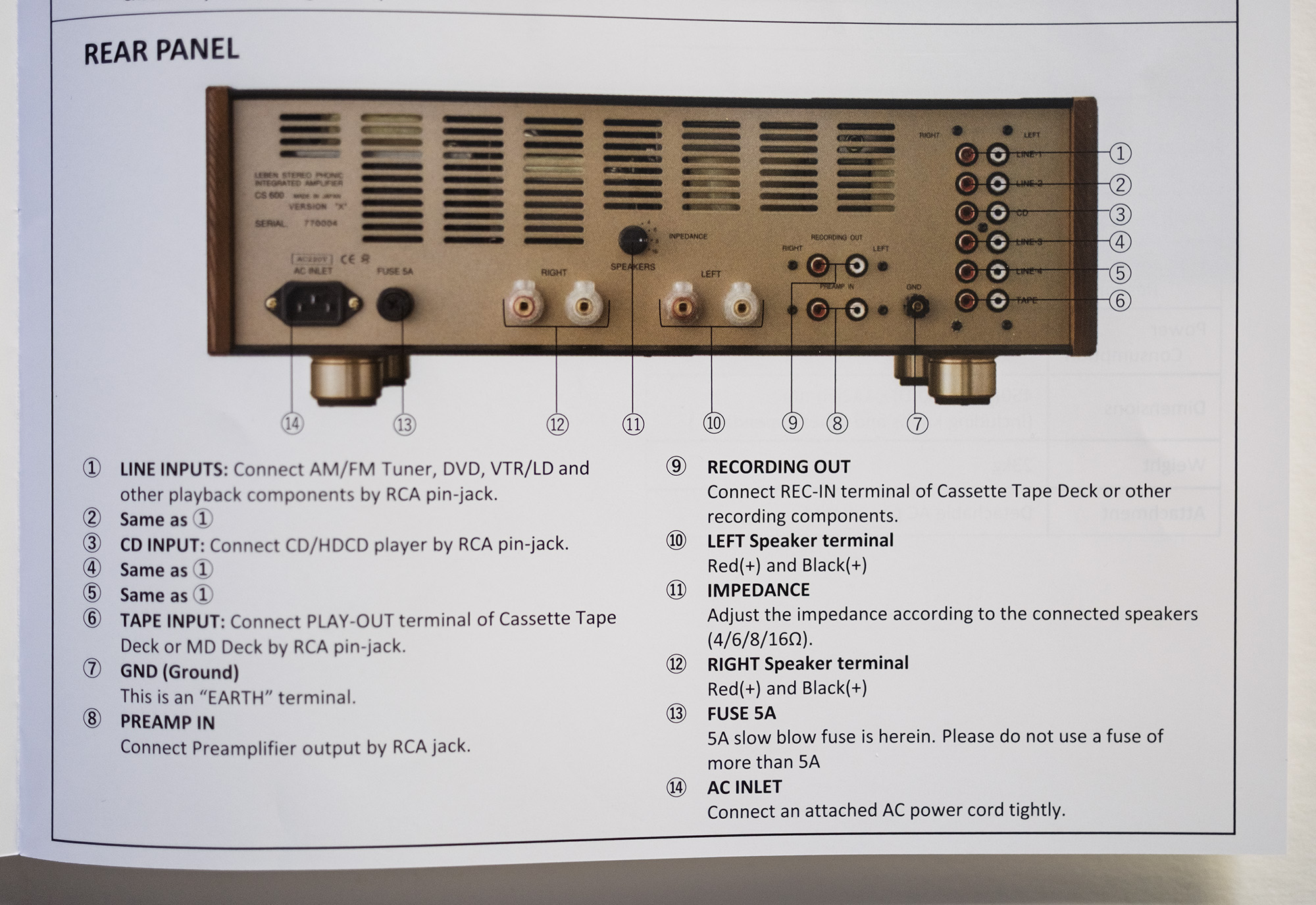
Try using the Tape Input (6) and see what you think. This offers a shorter signal path compared to the other inputs as it bypasses the Input Selector.
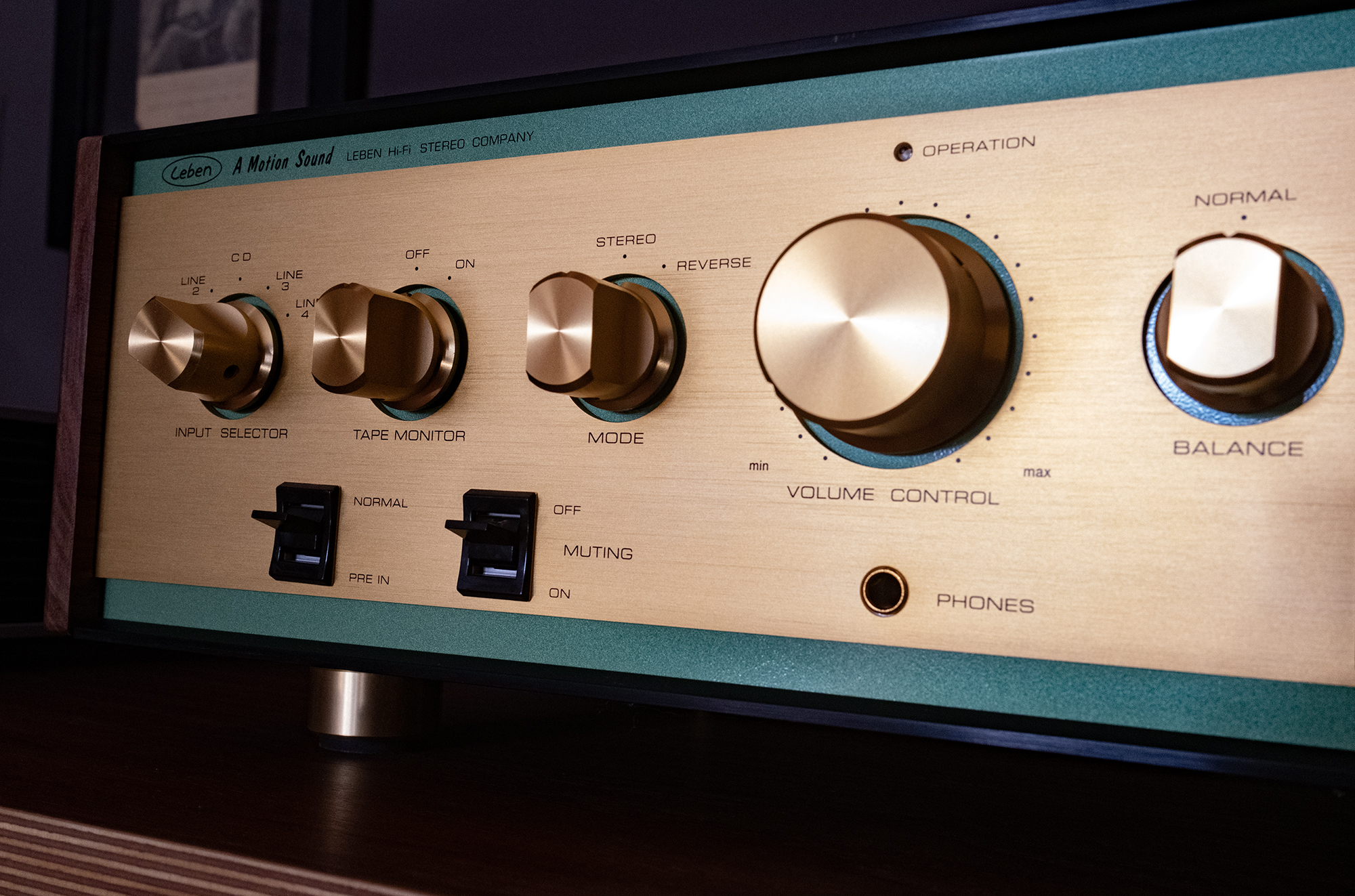
You just need to switch the front Tape Monitor knob to “On”.
